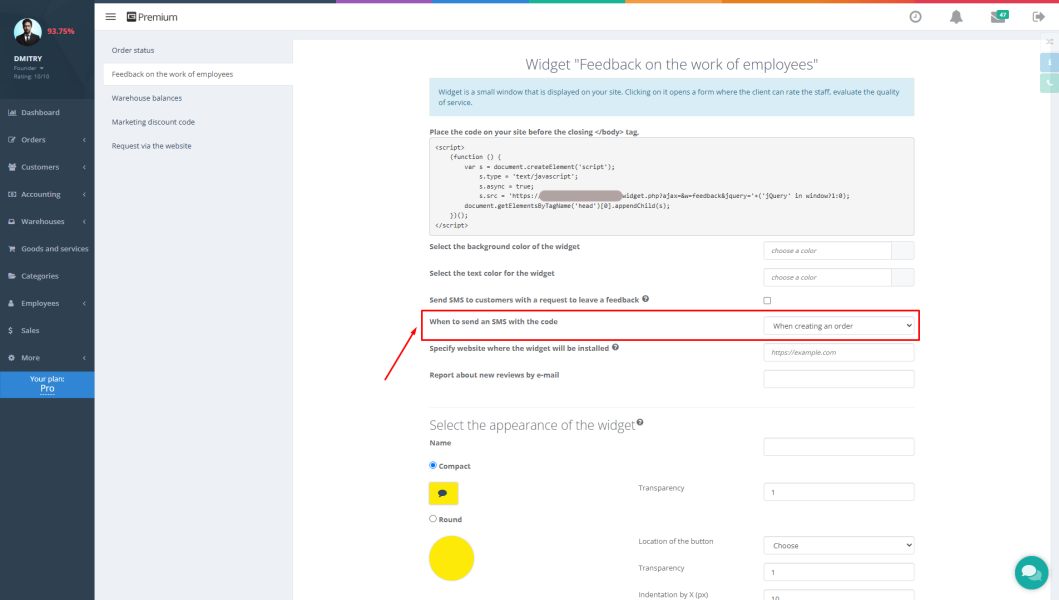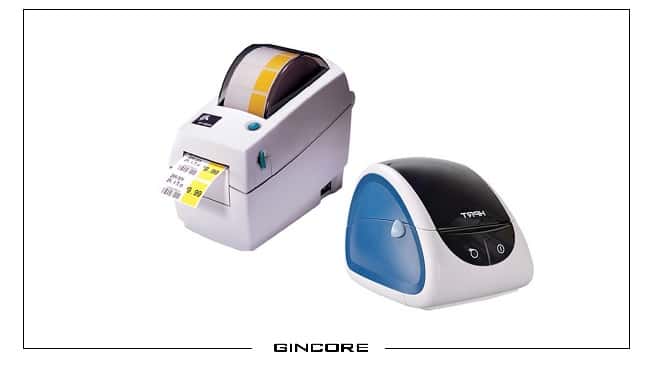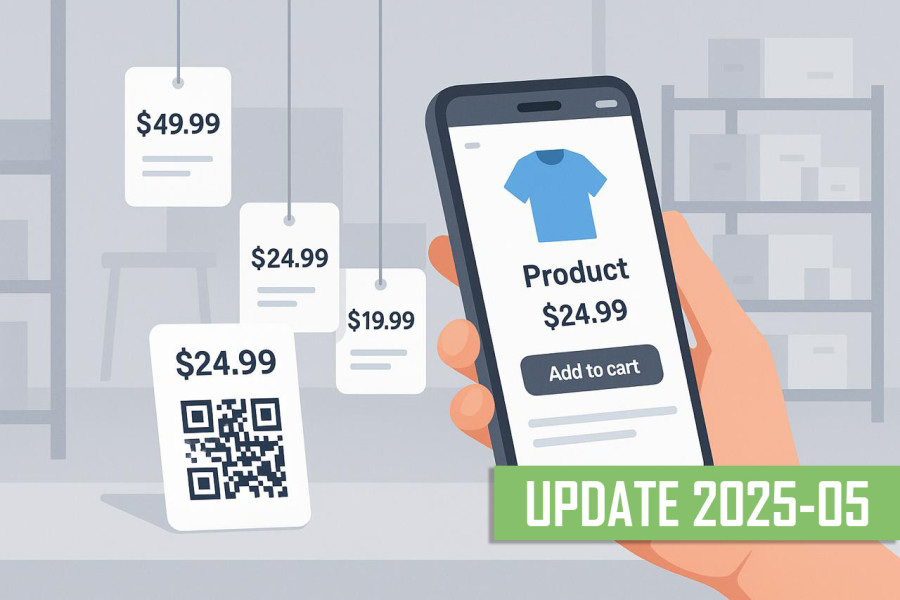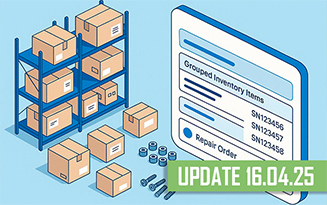Running a business that combines services and sales is no easy task. Service center owners often expand their operations by opening retail stores, while e-commerce electronics store owners do the opposite by launching their own repair shops. The main problem becomes redundant data entry: repairs are managed in one system, and sales in another. This leads to confusion with inventory levels, financial errors, and wasted time.
The Sales + Online Store feature in Gincore is designed to solve this problem. It is a powerful tool that combines repair order management, offline retail, and an online store into a single workspace. You get complete control over all processes, increase efficiency, and eliminate redundant accounting once and for all.
Who is this feature for?
This module is ideal for businesses that combine several areas:
- Service centers that also sell spare parts, accessories, or new equipment.
- Online stores that have launched their own repair and maintenance services.
- Retail stores looking to automate sales and inventory management.
- Companies that engage in wholesale and retail trade and need a flexible order management system.
The main goal is to provide a single platform for managing all types of orders, whether it’s a quick repair, a sale from the showroom, or a delivery from an online store.
Features and Benefits: What do you get?
Using the sales module in Gincore opens up extensive opportunities for automating your service center and sales operations.
- Unified Management System. Forget about switching between different programs. All data on sales, repairs, customers, and products are stored in one place, which eliminates errors and saves time.
- Two Order Creation Modes. The system flexibly adapts to your tasks:
- Quick Sale. Perfect for offline locations and showroom sales. It allows you to complete a transaction in seconds by simply scanning the product's barcode, without entering unnecessary customer data.
- Online Store. The classic way to process online orders, including full information: customer's full name, phone number, email, and delivery and payment methods.
- Smart Order Management. You can track every stage of a deal using customizable statuses: “New Order,” “In Stock,” “Out for Delivery,” “Delivered to Customer,” and others. This ensures transparency and control over the entire process.
- Inventory Automation. When a product is sold, it is automatically deducted from the inventory. If the required item is out of stock, the system can automatically create a purchase request to the supplier. This helps maintain accurate stock levels and avoid product shortages.
- Bulk Price Editing. One of Gincore’s most useful features is the ability to export products to Excel, quickly edit prices (e.g., set a markup as a % of the purchase cost), and upload the file back into the system. This allows you to reprice thousands of items in minutes.
- Telephony Integration. When a customer calls, the system can automatically pull up their data if it's already in the database, speeding up order processing.
- Document Generation. You can print a receipt, warranty card, or shipping invoice directly from the order card.
Gincore's Step-by-Step Guide to Using the Sales Module
Working with the feature is intuitive. Here’s how to create different types of orders.
How to process a quick sale (offline)
This method is ideal for retail locations where speed of service is crucial.
- Go to the “Customer Orders” section and open the “Sales” tab.
- Click “Create Order” and select the “Quick Sale” type.
- Scan the product's barcode. The system will instantly find it in the database and pull up the retail price.
- Click “Add to Cart,” then “Sell.”
- Done! The product is sold, and the transaction information is saved in the system.
How to process an order from an online store
This process includes more details and is suitable for e-commerce.
- When creating an order, select the “Online Store” type.
- Enter the customer's details: name, phone number, email, and delivery address.
- Add the desired products to the cart. You can choose the price type (retail, wholesale) and specify a discount in percentage or monetary value.
- Choose the payment method (cash, non-cash) and delivery method (pickup, courier, mail).
- Add a comment if necessary and save the order. You can then manage its status and dispatch the product.
Use Cases
Scenario 1: A service center sells accessories.
A customer comes to pick up their repaired laptop and decides to buy a bag for it. The manager opens a “Quick Sale” in Gincore, scans the bag's barcode, and completes the transaction in 10 seconds. The sale is recorded, and the item is deducted from inventory. All in one program.
Scenario 2: An online store with its own repair shop.
An order for a new smartphone is placed on the website. It is automatically (with configured integration) or manually created in Gincore as an “Online Store” order. The manager processes it, and the warehouse employee, seeing the order, prepares the item for shipment. If the customer later needs a warranty repair, a repair order will be created in the same system and linked to that customer's history.
Tips and Tricks
- Use bulk editing for promotions. Planning a sale? Export the desired product group to Excel, quickly change prices using formulas, and upload it back. This will save hours of manual work.
- Group identical items. If a customer orders multiple units of the same product at the same price, Gincore will group them into a single line. If you change the price for one of the units, it will be displayed separately. This is convenient for visually checking the order.
- Analyze advertising sources. When creating an order, specify where the customer came from. This will help you evaluate the effectiveness of your marketing channels and optimize your budget.
FAQ (Frequently Asked Questions)
Can I use this module if I only have a physical store?
Yes, the “Quick Sale” mode is perfect for retail locations and does not require entering unnecessary customer information.
Does Gincore integrate with my website on WordPress or Joomla?
It was mentioned in the video that integration with popular CMS like Joomla and WordPress is in the development pipeline. This will allow orders from the website to be automatically sent to Gincore.
How does the system manage inventory if products are used for both sales and repairs?
Gincore uses a single inventory database. When an item is sold or installed during a repair, it is deducted from the total stock. This ensures accurate tracking and prevents confusion.
Is it difficult to update prices for several thousand products?
No, thanks to the Excel export/import feature, this process is extremely simple and fast. You can use all of Excel's capabilities to manage your prices.
Conclusion
The Sales + Online Store module in Gincore is not just an additional feature, but a comprehensive solution for business automation. It eliminates redundant data entry, simplifies order, inventory, and financial management, and saves you time and resources. By consolidating all operations into one system, you gain complete control over your business and build a solid foundation for its growth.
Start using the sales module today to make your business more organized and profitable.

.png)












